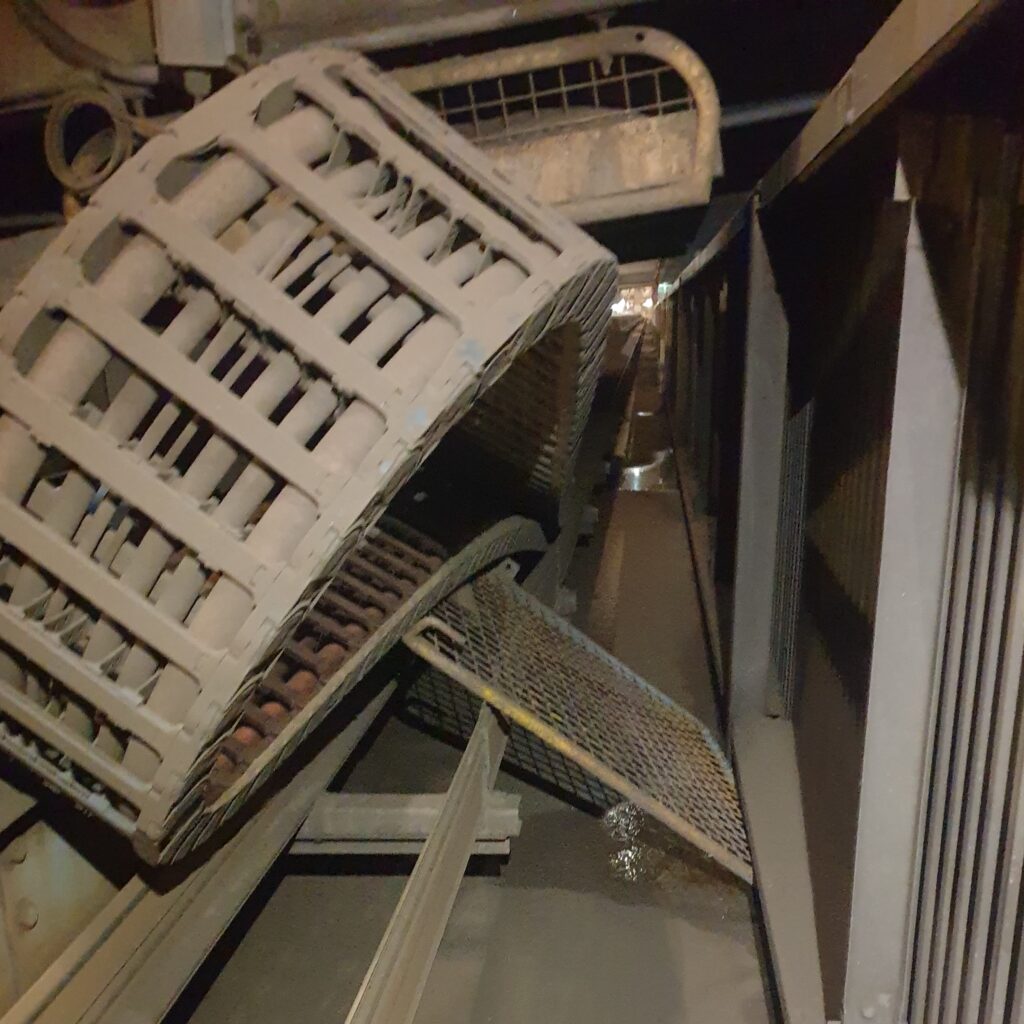“Last line of defence” – How i.Sense EC.P saved an international port operator from massive total failure
Richard Habering | 26. October 2021
The port – a harsh and salty environment with high machine duty cycles, not a place for unexpected system downtime. Heavy loads, long operating times and a wide variety of weatherconditions – cranes in port facilities have to deliver top performance. To ensure this at all times, reliable condition monitoring concepts are needed. I would like to briefly explain how this looks in practice and what advantages it creates for the users using the following ‘best practice’ example of an international port operator.

There, during one of the last inspections, all critical energy supply systems were supplemented with smart condition monitoring systems from igus – smart plastics. Our igus® energy chains already ensure safe cable guidance in various reach stacker and spreader models and in bulk handling and dockside cranes in over a thousand port facilities worldwide. Also long travels, such as for ship-to-shore cranes or high speed ASC forklifts can be implemented.
Nevertheless, a condition monitoring system adds immense value for the port or crane operator, especially in safety-critical processes. Because with i.Sense EC.P the pull/push forces on the e-chain are permanently monitored. If the forces are exceeded, the sensor detects this, signals it and if necessary switches off the system in order to prevent expensive consequential or total damage to the system. This was also the case in the following instance. Due to a sudden increase in force on one of the monitored energy supply systems on the container crane, the installed i.Sense EC.P switched off the system in a flash. And that was just as well. Because a protective plate was forgotten on the trough and blocked the travel path. Any further attempt to move the energy supply would have destroyed the entire system.

Thus, a total failure and massive loss for the plant operator could be avoided by quickly shutting down the plant. i.Sense EC.P was, so to speak, the “last line of defence”. This “last line of defence” has now become standard not only for dockside cranes, but is also gaining acceptance in many more industries, for example, in sewage treatment plants or in conveyor technology.
And for those who would like to have a look at the whole mode of operation and the process again, I have demonstrated the whole thing again here on our outdoor test site at igus:

